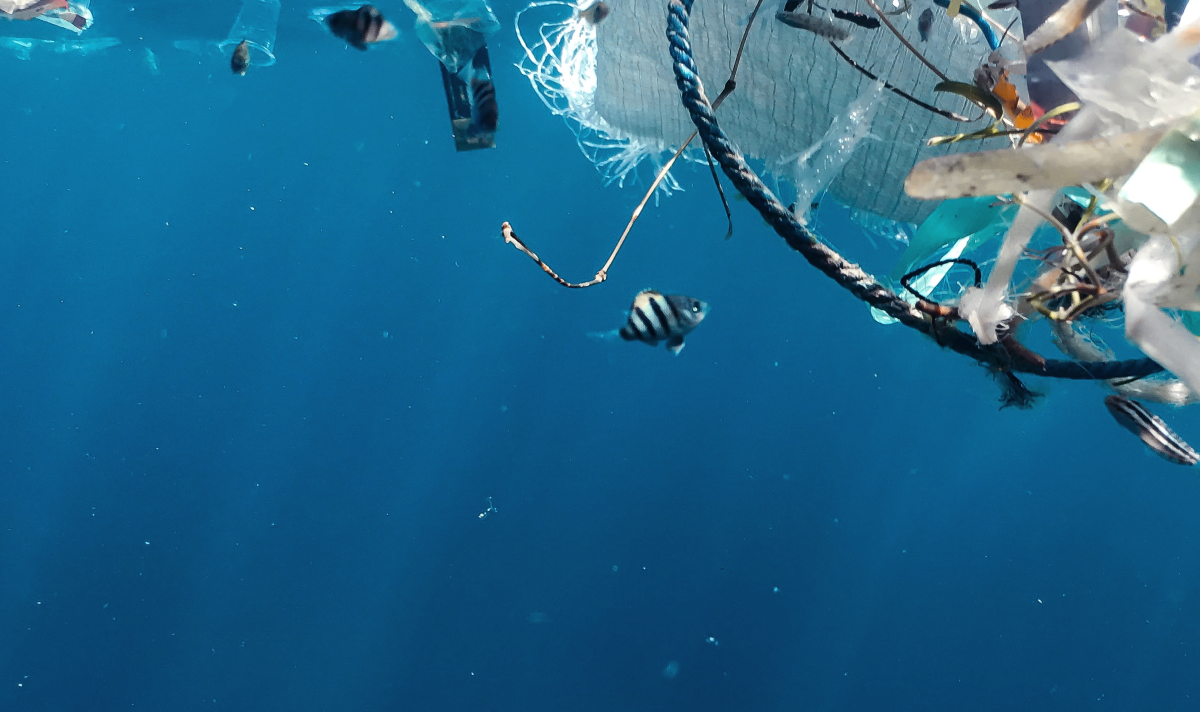The plastics industry will experience an overhaul of old paradigms to make way for a circular economy. Businesses and governments are taking major steps for plastic recycling to guarantee overall sustainability. Developments in recycling continue to gain momentum, but, as with any endeavor, there remain challenges to overcome. Data and analytics presents a solution to help manage multiple and interconnected goals so businesses can make sense of numerous data sources and reports.
Sustainability strategies must be holistic and multipronged for businesses to realize the most benefits and create as much impact as they can. When it comes to plastic recycling, stakeholders throughout the plastics value chain need to deal with general energy targets while also working on plastic-specific ones. Waste management organizations and government agencies have been tracking plastic waste and recycling, and businesses will need to include plastic recycling targets and KPIs to comply with region-specific and international targets.
Apart from variability in recyclability of plastic products, use cases for recycled plastics also need to be expanded. For example, mechanically recycled plastic can’t be used in food-grade applications. Plastic also degrades after several times of recycling and some waste products cannot be recycled to their original application. Chemical recycling processes are also currently complex and energy-intensive, affecting national and business carbon dioxide (CO2) emissions. Recycling plants need to shift to renewable energy sources to prevent affecting overall sustainability. It’s necessary to establish a healthy balance between recyclable plastic supply and demand for recycled plastic to prevent adding further to plastic pollution.
Complying with plastic recycling regulations and policies
Extended producer responsibility (EPR) is now reflected in many national policies and international regulations. When applied to plastic packaging, whoever introduces packaging or packaged goods into a country’s market is responsible for the material’s collection, sorting, and recycling after use. Although not all countries have mandated recycled content targets, they are slowly being implemented in major economies.
Here are examples of policies and legislation that businesses will need to comply with for recycling:
| Region/Country | Policy/Law | Additional Notes |
| Europe | Requires that PET bottles must consist of 25% recycled plastic and all plastic beverage bottles 30% by 2025 | |
| Targets that all plastic packaging should be reusable or recyclable by 2030 | ||
| United Kingdom | UK Packaging Tax | Effective 2022; requires any plastic packaging — manufactured or imported — that has less than 30% of recycled content to have a levy of £200 per ton |
|
France |
Anti-waste and Circular Economy Law | |
| Germany | Proposed for single-use plastic items | |
| China | Plastics pollution laws | Plans to eliminate nondegradable plastic bags and disposable plastic items in the hospitality sector |
| Australia | Packaging Covenant Organization |
Aims for 100% of packaging to be reusable, recyclable, or compostable; 70% of plastic packaging being recycled or composted; 20% recycled plastic content in plastic packaging by 2025 |
| United States | Circular Strategy | Increase the US’ recycling rate to 50% by 2030 |
| Waste reduction laws | Passed in Maine, Oregon, Colorado, and California, with California the first state to pass laws including recycling targets | |
| Italy | Ecomodulation of EPR | Easy-to-recycle products have lower fees and unrecyclable materials have four times the cost |
| Thailand | Extended Producer Responsibility scheme | Adopted in 2022; circular economy law being studied |
| Philippines | Extended Producer Responsibility Act | Passed in 2022 |
For businesses to stay on top of trends and challenges in the industry, they will need to manage and monitor information from different sources. This could be overwhelming, especially with the urgency of recycling targets being set across the globe. A data-driven and analytics-enabled approach can ease these burdens for businesses, especially since there are other sustainability goals that need to be achieved.
How data and analytics can help in plastic recycling
Here are some of the ways that data and analytics can help in plastic recycling:
Automate life cycle assessment (LCA): Life cycle assessments can be used by businesses for sustainability reporting, environmental certifications, and comparative studies for sustainability initiatives. With EPR policies and circular economy being adopted by more and more countries, data and analytics can help automate assessments for sustainability KPIs for plastics manufacturers.
Monitor KPI performance: Plastic manufacturers and recyclers can monitor volume and rate of waste collection and recycling as well as KPIs for energy, GHG emissions, and water consumption. They can also identify successes as well as pinpoint obstacles in meeting targets. Organizations throughout the plastics chain and local agencies can identify sources of low plastics collection, causes of sorting inaccuracies, and risks to compliance with regulations.
Forecast impact of plastic recycling initiatives: Organizations can assess and evaluate the impact of various plastic recycling initiatives and account for data from different locations to make the best investment decisions. Recyclers can also analyze and evaluate the effectiveness and costs of new technologies and compare against current technology used.
Supplier risk management: Businesses, especially multinational companies, can centralize data on subsidiaries and third-party suppliers and their performance against local mandates. For example, businesses can track product materials composition from suppliers and verify their compliance with local requirements. Data and analytics can help zoom in on potential risks as well and automatically flag suppliers falling behind in recycled content targets.
Streamline recycling routes and waste management: Waste collectors and recyclers can streamline collection routes to minimize energy waste and emissions.
Optimize cost and efficiency of recycling: Recycling plants can use data and analytics to measure the cost of operations and find potential inefficiencies. Analysis of machinery performance and accuracy can identify bottlenecks that could affect other sustainability goals such as energy and water consumption. With a combination of tools, recyclers can also ensure consistency in the quality of recycled materials and volume of collected and recycled waste.
Optimize supply – demand and collaborations: The circular economy emphasizes collaborations across businesses and governments to ensure that plastic waste is recycled, and that recycled plastic has a demand. Analytics enables recycling coalitions to track and analyze data from plastic collectors to recyclers as well as product manufacturers and users to find inefficiencies and risks throughout circular models. Stakeholders can automatically find low supply or oversupply, find new markets for recycled products, and make informed business decisions in production and procurement.
Compliance: As recycled content targets become more prevalent, businesses can stay on top of different regional and national targets as well as changing regulations using analytics. Dashboards enabled by advanced analytics can pull from the latest guidelines, monitor performance against dynamic targets, and identify noncompliance risks within and between countries or regions.
Optimize materials procurement: Analytics can help in making informed purchasing decisions on raw versus recycled material as well as determine source of contaminants.
Prevent greenwashing and enhance storytelling: Businesses that use plastic can improve the traceability of materials and validate claims about recycled products and materials through analytics. This also means meeting targets for certifications and requirements for having ecolabels in their products. Accurate and reliable data can also find genuine successes and help marketing teams tell honest and data-backed stories for customers.
Transparent and automated data for sustainability reports: Businesses required to comply with corporate social responsibility (CSR) reporting or pursuing environmental product declarations (EPDs) can automate data collection and analysis through analytics. This ensures transparency and verifiability of plastic-related KPIs throughout the recycling supply chain and inspire trust from stakeholders, customers, and investors.
Further reading:

|
Growing a Greener Business With Sustainable Packaging |
 |
The Business's Guide to Carbon Offsetting Businesses are under increasing pressure to reduce their carbon footprint. One of the viable ways businesses do this is offsetting their carbon emissions, but how exactly does it work, and how can businesses use it with more credibility and transparency? Find out on our guide. |
Recycling-related targets and KPIs
There is a wealth of goals, targets, and key performance indicators (KPIs) for plastic manufacturers, users, and recyclers. The following are examples of metrics and KPIs that businesses can track and analyze, which can be incorporated into dashboards and sustainability reports:
Sustainability targets for recycling can be linked to the UN’s Sustainable Development Goal 12:
-
Adopt circular business models for plastic products and recycled plastic.
-
Implement sustainable procurement, obtain ecolabels and certifications, and adopt the same principles to suppliers and other third parties.
-
Minimize plastic packaging waste.
Sample data:
-
Weight and volume (in tons) of renewable and nonrenewable materials used to recycle plastic
-
Percentage of recycled inputs used to manufacture products
-
EPR metrics (for example, the percentage of reclaimed products and their packaging materials for each product category)
-
Generation rate (total waste generated) tracked year over year
-
Percentage of reusable or recyclable packaging in stores
Recyclers and municipal waste management organizations may have other targets to measure recycling productivity, efficiency, and safety:
-
Improve plastic waste collection and sorting.
-
Increase the volume of recyclable plastics recovered and recycled.
-
Reduce contamination of recyclable waste and increase applications of recycled material produced.
-
Ensure compliance of final recycled product with content targets committed to or mandated by local laws.
Sample data:
-
Hazardous and nonhazardous waste (in tons) broken down into disposal methods
-
Diversion rate (percentage of total waste materials generated that are diverted from landfills or incineration)
-
Capture rate (percentage of recoverable items that get recycled, composted, or reused)
-
Contamination rate (weight of the trash or otherwise nonrecyclable or recoverable items in recycling bins over total amount of all materials in recycling bins)
-
Percentage of products complying with recycled content targets within country or across countries
Indeed, the plastic recycling landscape is dynamic and ever-shifting as countries and companies respond to new trends, technologies, and challenges. Data and analytics empowers businesses to break down the seemingly imperishable roadblocks toward a sustainable approach to plastic. A data-driven and analytics-enabled strategy can help organizations stay resilient and excel in a sustainable and circular plastics economy.
Download our white paper, “Breaking Down Plastic Recycling With Data and Analytics,” to better understand:
-
The complexities of plastic recycling — the different kinds of plastic that businesses need to account for, the various methods of recycling it, and their impact to the business.
-
The current and forthcoming outlook in plastic recycling as more enterprises move to net zero.
-
The obstacles of successfully embedding sustainability in plastic recycling.
-
How enterprises can use data and analytics to sort their priorities in their supply and value chains.



.png)



